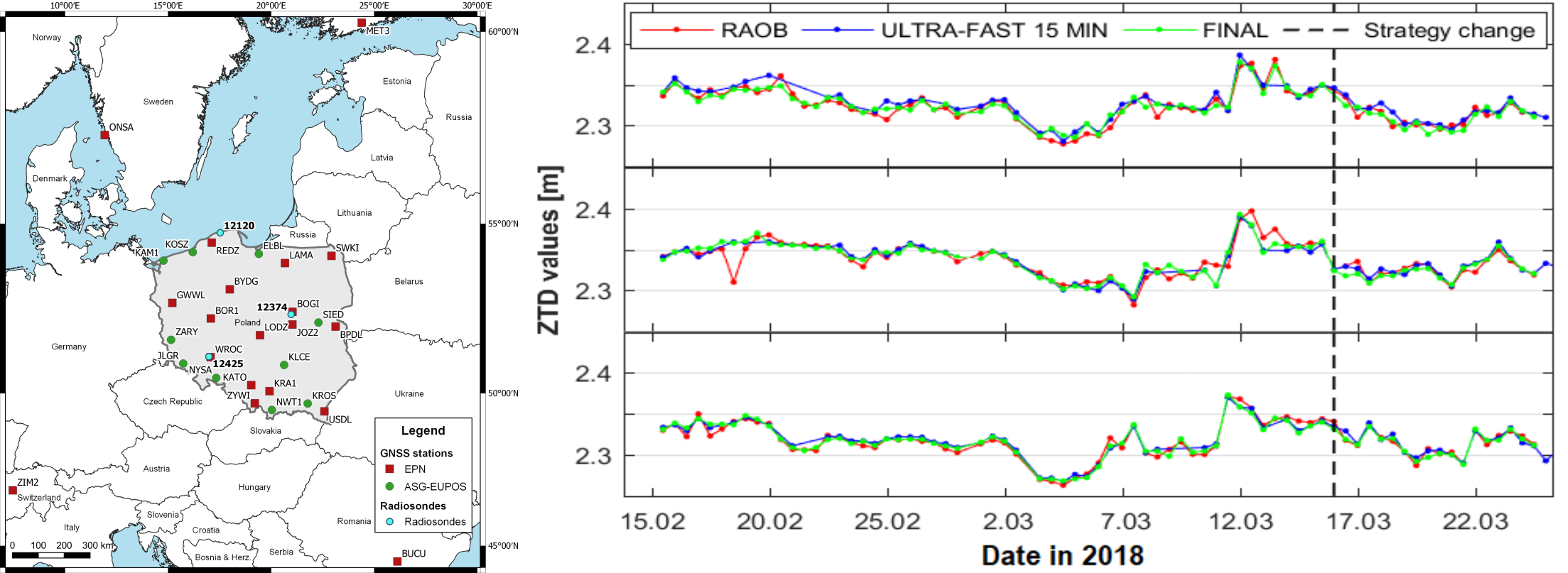Determination of the spatio- temporal distribution of water vapour in the troposphere with high accuracy has always posed a challenge in meteorology and climate research. The implementation of an automatic process to determine the water vapour distribution based on satellite observations (GPS) was a major breakthrough in meteorology. In the following decades, this process was continuously improved, which allowed us to reduce product latency to near real-time (NRT). Currently, NRT standard services are based on one-hour processing, however, the availability of real-time Global Navigation Satellite System (GNSS) products allows for an even greater reduction in delivery time. In this paper, we demonstrate results from the new ultra-fast NRT (NRT UF) processing of GPS data to obtain troposphere parameters and coordinates with a 15-minute interval. Products from three external data sources were used to obtain the quality of the zenith total delay (ZTD) estimated by NRT 15-minute processing: 1) final post-processing (FPP) service, 2) EUREF Final ZTD solution and the 3) radiosonde observations. The retrieval quality of troposphere parameters (ZTD) is similar to that of the standard NRT system, achieving an RMS error of 5mm. The evaluation of coordinates obtained with the NRT UF 15-minute processing shows agreement with final coordinates on the order of 2.2 mm. The service will be used in severe weather nowcasting and rapid deformation monitoring.

Details of our study are presented in the paper “Ultra-fast near real-time estimation of troposphere parameters and coordinates from GPS data” by Damian Tondaś1 and Jan Kapłon1 and Witold Rohm1
Published in Measurement, 107849; https://doi.org/10.1016/j.measurement.2020.107849
1 Institute of Geodesy and Geoinformatics, Wrocław University of Environmental Life and Sciences
Funding: This investigation was part of the project EPOS-PL, European Plate Observing System POIR.04.02.00-14-A003/16, funded by the Operational Programme Smart Growth 2014–2020, Priority IV: Increasing the research potential, Action 4.2: Development of modern research infrastructure of the science sector and co-financed by the European Regional Development Fund. The authors gratefully acknowledge the Wrocław Center of Networking and Supercomputing (http://www.wcss.wroc.pl/) computational grant using MATLAB Software License no. 101979 and computational grant no. 170. The research was partially conducted on the E-SCIENCE.PL platform, financed by the European Regional Development Fund within the framework of the Innovative Economy funding stream and the State budget (No POIG.02.03.00-02-027/13).
